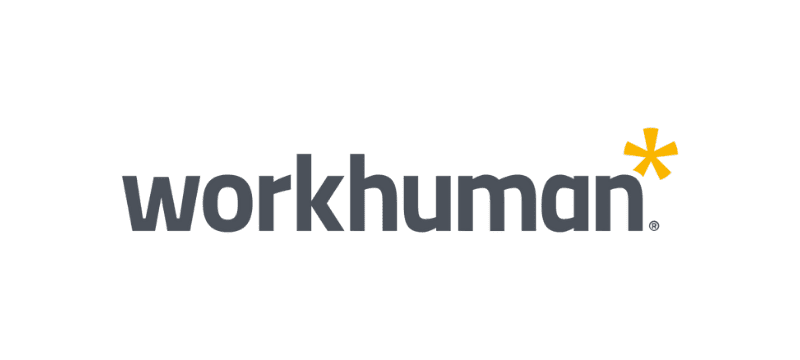The human connection effect: Power productivity, engagement and retention
Understand how the last two years have changed work and what means for catering to employee wellbeing, in-work equity, work-life balance, and DE&I
Discover how creating great experiences of work enables futureproofing, as well as protection against current talent marketplace difficulties
Get the latest research into what great organizations are doing when it comes to building excellent experiences of work



With the pandemic changing so much around expectations and experiences of work, organizations must understand how everything from the macrostructure of work to simple exchanges of recognition impacts their employer’s brand and culture.
To show why this area requires renewed HR focus, Jon Kennard, Editorial Content Manager at UNLEASH is joined by Toneya Sarwar, HR Business Partner EMEA for Cisco, and Chris French, EVP Customer Strategy at Workhuman to dive into the latest research into experiences of work, and how a focus on culture, recognition, connection, work structures and socializing at work can drive real talent marketplace dividends.
Watch on-demand to:
- Understand what factors of remote and hybrid work build social trust, psychological safety, good leader relations, excellent culture, and better wellbeing.
- Hear about what Cisco is doing to make the new world of work a good one, and where technology and physical space play a role.
- Get the latest on why employees need to have a say on what the working culture and structures look like.
Leaders are [saying] they’re 60% therapists because there are so many things happening on a macro level, with the economy, the cost of living, inflation… they sped a lot of time there for their teams.
Toneya Sarwar, HR Business Partner, EMEA at Cisco
How are employees feeling in 2022
French kickstarted the webinar by sharing toplines from the latest Workhuman research into how employees felt about their working conditions and experience, and what these were, over the last two years. It confirmed something that HR likely already knew: that most work is becoming hybrid. And whilst webinar speakers agreed this was a good thing there were things the research highlighted that HR needs to be aware of.
Firstly, workers that are completely remote often end up less confident and more uneasy; French suggested this could make them less tolerant of change and more tunnel-visioned. Not something that organizations want in a VUCA world. It wasn’t just remote work that threw up issues. Whilst hybrid workers feel the most connected and appreciated, they also feel most overworked. On-site workers also feel higher levels of overwork, too. Again, all areas that HR likely has to manage and must work hard to ensure good outcomes in.
What does meaningful work look like right now?
For Sarwar, with problems such as these brewing within the new styles of work, she has noticed that the management of talent is changing. Whilst she believes that the pandemic proliferation of lots of new styles of working is a good and organic thing, she can see that, increasingly, good organizations are focussing on well-being and their leaders’ roles have changed to become more focused on balancing different types of work and being there to help their employees cope with a rapidly changing world.
At Cisco, this pivot has included looking at making work flexible in the most holistic sense and ensuring that employees have the tools needed for them to be as successful as possible. It’s also included looking at more radical ideas around work: such as creating shorter working days and shorter working weeks; a direct response to the longer hours many have reported working since the pandemic began.
Increasingly, crafting good work experiences is going to also require that HR focuses on respect, diversity, equity, and inclusion – something that over seven in 10 workers now believe is somewhat or very important, according to Workhuman research. Trust, as Sarwar explained, will be an important part of this. Whilst this will take years to grow, she noted that it will be an important part of fostering goodwill in areas, such as diversity, that are increasingly center stage.
And, as the world becomes more hybrid, there is going to be a greater need for conscious effort around curating and structuring work. As French described, this is going to require companies to reimagine real estate, as well as understand how to balance social activity with task orientation within work, and where technology enables or hinders, social connectivity. There is one word that Sarwar believes will help here: balance. In her view, the physical collaboration will be part of this but getting the right amount will require work. If HR hasn’t got it right straight away, keep working at it: it’ll get there.
Connection and culture
This might form part of a tactic that French called conscious collaboration: bringing people together in a single space to relationship build and create social connections. Here, HR might work closely with CFOs and the executive to use costs saved by potential real estate downsizing as investments into making workforce meetups a greater and more productive experience. Here Cisco, have thought about assigning a budget to leaders to bring teams and customers together in ways that make sense for them.
Rather than looking at hybrid and remote work as something that could save money, French intimated that it could be that HR deploys this spend to make it more productive, in a way that makes sense for this new world of work. This will form part of a move to make people feel more connected, which has a clear correlation with boosting culture, mental health, and physical health. And it now does require that effort, French explained, as these facets of work will not occur organically. As Sarwar added: it’s about creating, even if this takes time, a conscious culture, in which everyone, not just leaders, can have their say.
Talent market competitiveness
One of the questions HR will, of course, ask is: how will all of the above benefit my position in an increasingly difficult talent market, where good hires are harder to come by and talented staff are likely to leave?
Well, as discussed in the webinar, one way this focus on social connection and networking can bear fruit is via the manager check-in. This creates psychological safety for the employees, especially important if that relationship is increasingly physically or temporally distant, and can help them on their development and growth journey – something that can help with retention, and also ensure that employee feels like they are getting individual care. Frequency and authenticity here are also important metrics.
Even simple things, such as thank yous from managers, can have a massive impact on the talent strategy. Workhuman research found that those who get recognition are half as likely to be looking for a new job and three times as likely to want to grow at that organization. Of course, this doesn’t just have to be hierarchical.
Workhuman research also found other areas that might help organizations stand out in the talent marketplace. In their survey, they asked what might help employees want to return to a former employer. Whilst pay and benefits obviously have a role, they found that meaningful work and good culture also play a leading role. This can be a crucial part in creating a turning point in how focusing on work has an impact in the talent marketplace.
As French concluded, it’s an approach like this that can help employers become the greener grass that candidates in the marketplace start thinking your organization is.
